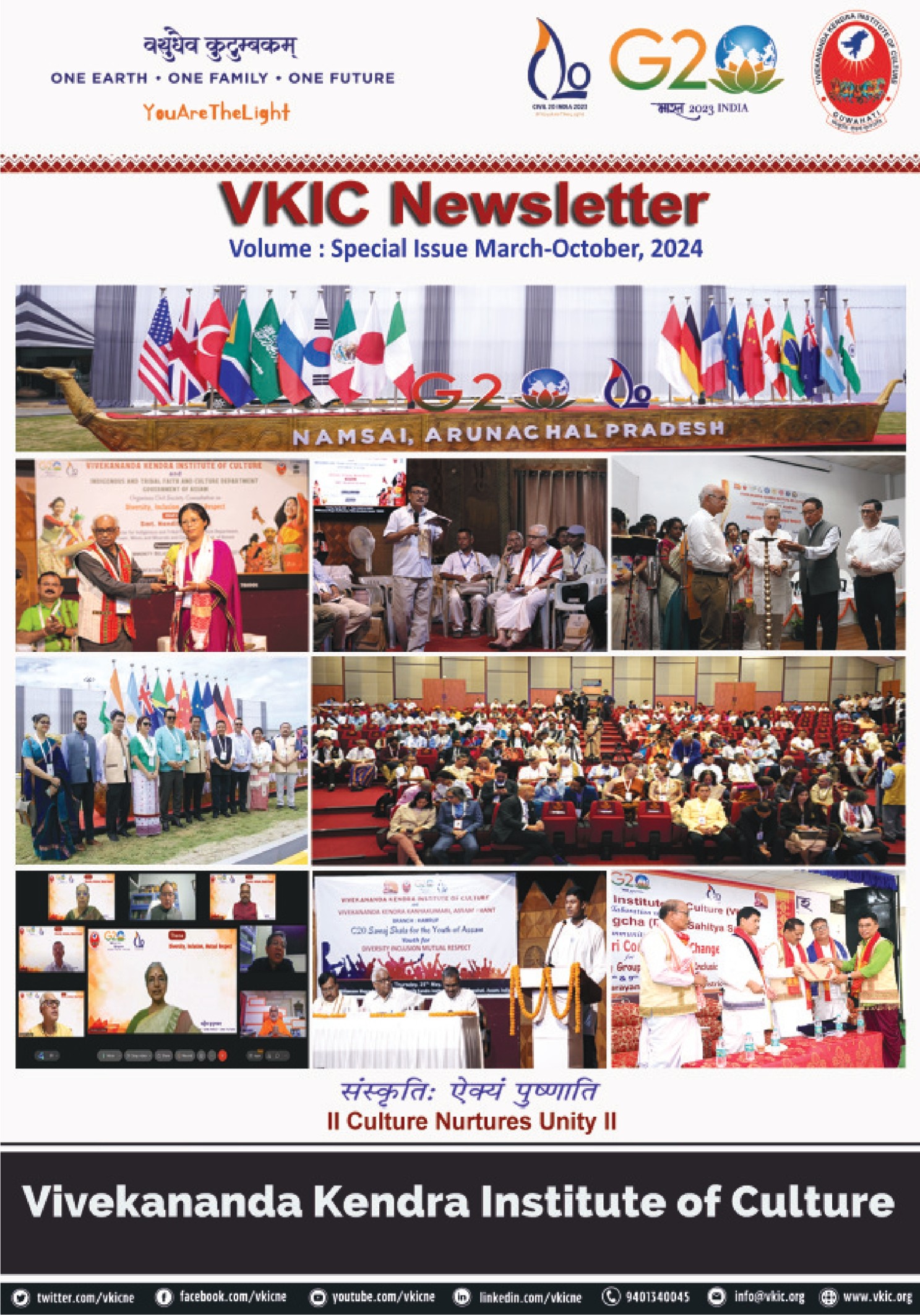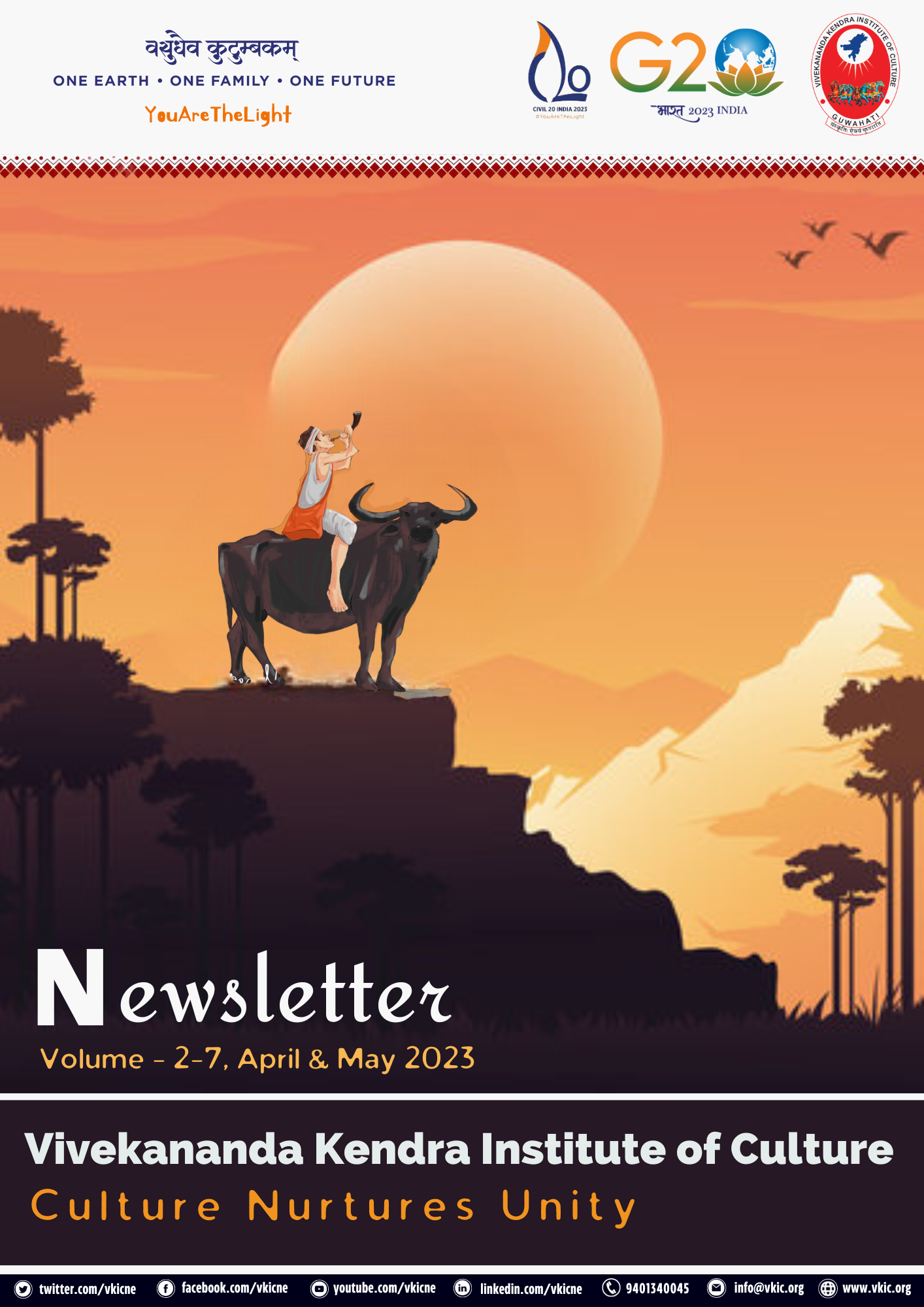Mananeeya P Parameswaranji President, Vivekananda Kendra Kanyakumari
[Transcript of the talk delivered during the Inauguration of the Vivekananda Kendra Institute of Culture building in Guwahati, 1996]
This is a moment of fulfilment, because on this historic occasion of the inauguration of the Vivekananda Kendra Institute of Culture, one of the major dreams of Mananeeya Eknath Ranade, the founder of Vivekananda Kendra, is being realized. The idea behind this institute is to study, do research in and propagate the national unity of India, as understood by our ancient seers and cherished by the great sons and daughters of India throughout her long history and spelt out by modern sages like Swami Vivekananda and Mahayogi Aurobindo. This is a crying need of the times particularly with regard to the north-eastern region, where separatist forces are extremely active to disrupt the unity of India.
Vivekananda Kendra has from its very inception taken keen interest in this part of the country. It may seem strange to some that the Kendra which is based in the south-western extreme of Bharat should feel so concerned about the north-east lying in the opposite extreme of the land. In fact, there is nothing strange about it. This has happened, time and again, in our long history. Swami Vivekananda, born and brought up in Calcutta, discovered his life mission in Kanyakumari. Parvathi doing Tapas in Kanyakumari is the daughter of Himavan in the north. These are the signs and symbols of the fundamental unity of this unique country, which we all adore as Bharat Mata.
But it is also our experience that often we tend to forget the obvious. The unity of India, like human love, has to be diligently and continuously nursed and nourished lest ignorance and selfishness, narrow-mindedness and sectarianism overshadow the sentiment of unity. Unfortunately that is what is happening all over the country, and in a very alarming manner in the north-east.
Sentiments are deliberately being whipped and people are told that they are not children of Mother India. The threat of dismemberment of the nation is hovering over the horizon. Under these circumstances it is absolutely necessary that all our efforts should be made to re-discover the fundamental unity of India. We must be very very clear that we are not inventing something that was not there before. We are only re-discovering the ancient cultural unity and strengthening it and expressing it in a modern idiom for the sake of the present generation, which has unfortunately been brainwashed into forgetting it by a misconceived education system and vested-interest groups. This is the kind of the work which the Vivekananda Kendra Institute of Culture intends to take up.
The unity of India has been an article of faith with us. It is based on a spiritual perception. It is the same divine Mother whom we worship as Kamakhya Devi in Assam who is worshipped as Devi Kanyakumari in Tamil Nadu in the South. Over thousands of years our forefathers have been, with supreme devotion, dedicating themselves to keeping alive this delicate sentiment. It has been an organic and living unity. It cannot be compared with what the Americans have been doing. They are a modern, and not yet fully-formed nation. Their attempt has been to melt disparate elements into a totally new alloy. They called it ‘the melting pot’ experiment. The experiment has not succeeded. It is not likely to succeed because it is not in keeping with human nature. According to this author our model is not even that of the mosaic of cultures because the concept is more mechanical than organic. The Indian model can be described as a fundamental, seminal unity, manifesting as vibrant, colourful diversity.
India is the only country where the sublime truth of unity in diversity has been understood, appreciated and also practised from time immemorial. We have done this with regard to the various castes, communities and religions within India; we have also accepted and assimilated people from across the borders, whether they came to India as invaders, traders or refugees. In course of time all of them have been accommodated in our national and cultural framework. What India can legitimately be proud of is that we have never annihilated or exterminated any group. As Swami Vivekananda stated:“We have never been a conquering race, and this blessing is with us”. This is because we never believed that we have to bulldoze all humanity into one, uniform, monotonous mould. Our concept of nation has been beautifully described in theAtharva Veda:
Janam bibhrati bahudha vivaacham
Naanaa dharmaanam prithvi yathaukasam
Sahasram dhaaraa dhravinashya meduham
Dhruveva dhenu anupashuranthi
(This land standing firm like the Kamadhenu, nourishes in a thousand ways, people of different worship and speaking various languages as if in a family.)
It is needless to state that every part of India east or west, south or north has equally shared in the cultural life of India and each, in its own distinct way, has contributed to the rich and colourful national edifice. The picture would have been incomplete without the contribution of even the smallest among them. Totality alone is the reality. In fact, as Mahayogi Aurobindo has pointed out, the real centres of India’s cultural dynamism and creativity were spread throughout the length and breadth of India and were not drawn into and concentrated in the various state capitals or the national capital. Hundreds of such dynamic centres kept the cultural life of India alive when political capitals succumbed to foreign invaders and other cultural patterns. Even today, in spite of all the communications revolution that has been achieved and the much talked about globalisation, India can achieve her best only if the regional and sub-regional centres of cultural life remain active and even autonomous to make a cultural efflorescence possible. In fact, that is the rationale behind such centres of intellectual and cultural activity.
The Indian experiment has great relevance to the present world situation. Peaceful co-existence of all the nations of the world, rich and poor, big and small, white and black, and north and south can be assured only on the basis of a philosophy that accepts the principle of unity in diversity, that Truth is many-faceted and can be approached in different ways, that each has to contribute in its own distinct way to the sum total of world culture, that the strength of the whole lies in the strength of each of its parts. In the perilously poised world of today, where selfishness and hypocrisy rule the roost, this is the only philosophy that can save the world. Hollow words like ‘globalisation’ and a ‘new world order’ are only deceptive.
Another area of study which is of intense interest for the institute is the health of the body-politic of the north-eastern region. Health is defined as a state of equilibrium. Equilibrium may be disturbed by internal or external reasons. Demographic imbalance can play havoc with the health of a nation. The north-eastern region being a border area has always been extremely sensitive from this point of view. It continues to be so even today. The partition of India, instead of solving the issue, has made it more complicated. Demographic equilibrium can come under strain through external factors like the influx of refugees, immigrants and infiltrators. Ever since the dawn of the history migrations have taken place either in droplets or on a massive scale. Every nation is worried about the imbalance created by them and takes steps to guard against the threat posed by them. Here is a tolerance level beyond which no nation can permit alien inflow. If it allows this, out of indifference, ignorance or incompetence, the price that has to be paid is self-extinction.
Every state in the north-eastern region is now facing the problem of people coming in either as refugees, immigrants or infiltrators from across the border.We have to be constantly alert to see whether the tolerance level is being crossed and what the impact of the inflow is on our socio-economic and cultural life. No nation can afford to be indifferent in this regard. But, strangely enough, there in our country ivory-tower intellectuals who openly say that the inflow from outside is solely due to the miserable economic conditions and that we should adopt an open-door policy on humanitarian grounds. There are visionary intellectuals who propose that the only solution is to uplift the living conditions of the poor, undeveloped neighbouring countries from which people migrate to India. I shall cite one example. The January issue ofSeminar, a leading intellectual journal of India, published from Delhi, said- Migration will continue, especially from Bangladesh and Nepal. No wall, law or police force anywhere in the world has been able to stop it. People, like water, always find their level for survival. But if massive inflows are to be checked then we have to find strategies of helping Bangladesh and Nepal develop their economies and help curb an outflow of people.
Regional and national interests are forgotten in their root-less humanitarian perception. Even the richest countries like the US cannot, and do not, adopt an open-door policy with regard to immigration. Much less can a country like India afford to do this.
There is another subtle reason also. Culture may be defined as the manifestation of the soul of the nation, visibly reflected in all walks of life. It is something like that of the of the spirit or Atma. Both interact upon each other. If the culture, Sukshma Shareera, gets contaminated by outside influence, the soul also becomes clouded, and if this continues unchecked, it might even get extinguished. The demographic equilibrium, when disturbed, leads to the distortion of culture and consequent annihilation of the national soul. Close monitoring of all these influences at the subtle level has to be taken up as a matter of priority. The association of competent, sensitive and talented individuals and resource-persons has to be ensured for the success of this.The Vivekananda Kendra Institute of Culture will always keep this in its heart and pursue the matter diligently.
I have already pointed out a few areas of activity which the institute has on its agenda. As was pointed out at the beginning, Mananeeya Eknathji Ranade was all eyes and ears to the problems and developments in the north-eastern region. Swami Vivekananda, too, with his deep vision and foresight had realised the importance of this region. Towards the end of his earthly career, having almost completed his mission, he visited places like Guwahati and Shillong on a pilgrimage, taking his mother along with him. His biographers have pointed out how disturbed he was at the state of affairs at that time. Things have not improved since then.That explains why Vivekananda Kendra deems it its bounden duty to pay special attention to the cultural educational activities of this region. Politics has always been scrupulously avoided by the Kendra because it wants to bring together all men of good-will to serve the cause of the Hindu Nation.
Vivekananda Kendra realises very well that it is easy to start an Institute of Culture, but it is very difficult to run it properly, bring to fruition the noble objectives for which it has been established. For this, we will always seek the co-operation of all like-minded individuals and institutions with an open mind. All of us are conscious that the problems faced by our country are so numerous and so complex that no one institution or person can single-handed hope to solve them. All those who are interested in the progress and welfare of the country will have the support of each other and supplement one another. That is the spirit in which we launch this National Institute of Culture in the name of Swami Vivekananda.


